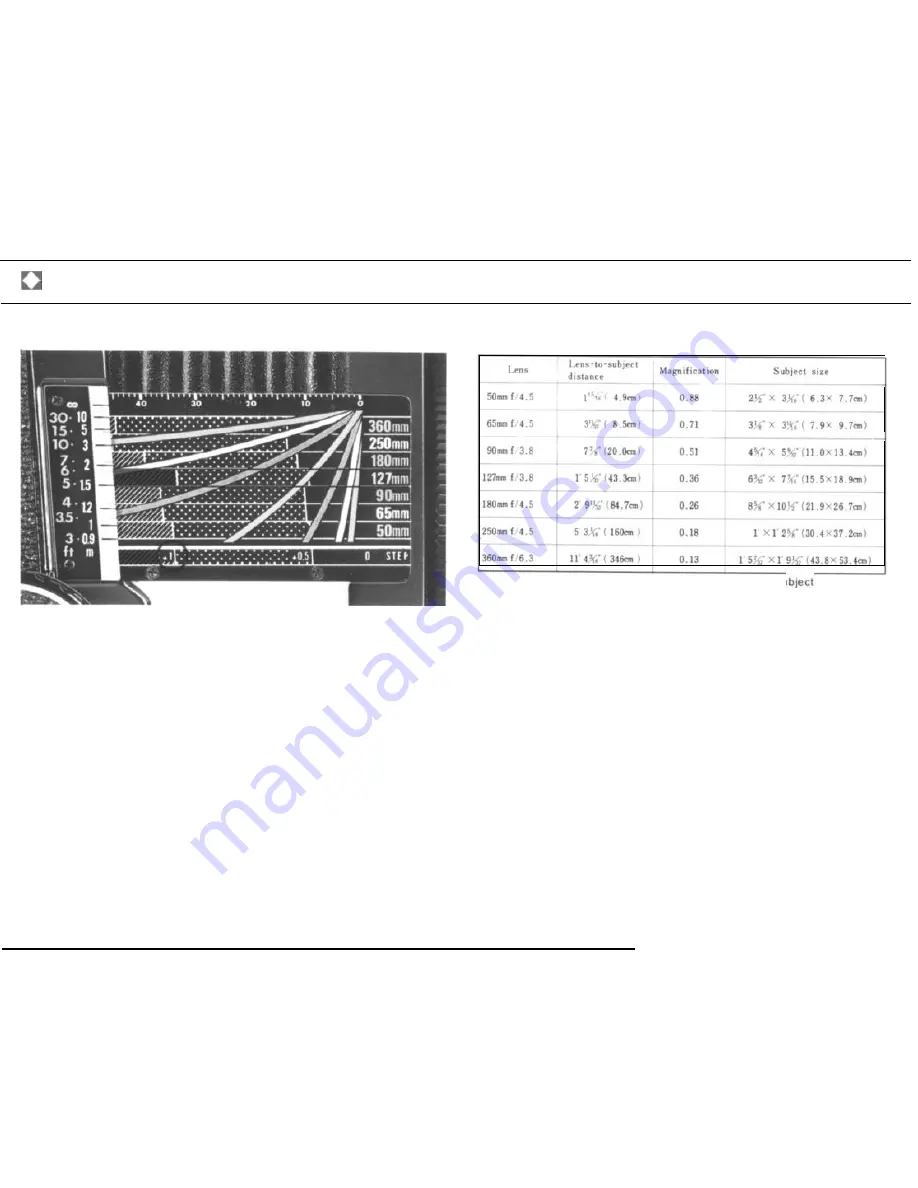
Close-up Photography
l
Exposure compensation for close-up photography
l
Maximum close-up photography table
(with bellows fully extended)
When the lens is extended for close-up pho-
tography, and distance between the lens and
the film plane increases beyond normal,
image brightness on the film plane de-
creases, requiring an increase in exposure.
To adjust the exposure, refer to the exposure
compensation scale on the camera
body.
1. After adjusting focus on the subject, read
the exposure compensation value obtained
on the exposure compensation scale.
For example, assume that focus was ad-
justed with the 127mm lens and the result
was as shown in the photo.
Seek the same pattern in the bottom column
as the pattern where side panel lines meet
the 127mm lens scale. The numerical value
of that pattern
(+
1 in this case) is the expo-
sure compensation value.
The lens-to.-subject distance represents the distance of the su
edge of the lens barrel.
2. Compensate the exposure by changing * When using the 50mm and 65mm lenses
either the shutter speed or the aperture. closer than 3 1/4 ft (1 meter), it is necessary
When the exposure compensation value is to use a lens aperture of f/16 or smaller to
+ 1, open the aperture one stop, or slow the obtain satisfactory lens performance.
shutter speed 1 step. For 0.5 step compen- * Graduations on the upper side of the
sation, use the half-stop aperture scale distance scale represents the bellows ex-
settings. tension values (mm).
For example, if your exposure meter shows
an exposure setting of (1/60 sec. at f/16), it
must be adjusted in the case of the + 1
compensation value to (1/30 sec. at f/16) or
(1/60 sec. of f/11).
This scale is
used to
obtain exposure com-
pensation values for close-up photography
with extension tubes. (Refer to the next
page.)
* When using the CdS finder for the
Mamiya RB, exposure need not be com-
pensated, since the meter reads actual
exposure directly.
from the front
25





























